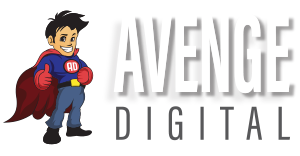
Throughout the 8 years I've been in the industry, one of the biggest issues I've witnessed facing agencies is defining what makes a call or lead valid, or "qualified". First, let’s start with a basic definition. Defining a lead as qualified basically means they are qualified to talk to a sales representative, whether that's an agent, producer. This is a prospect that has a high likelihood to buy and is ready for sales engagement. Simple enough, right?
Unfortunately, that is where the simplicity ends since there is no one-size fits all approach to lead qualification. Traditionally, agencies that have well-developed lead life-cycle stages agree on the definition of a sales qualified lead. This involves actually listening to the sales team and understanding what works for them; though it also means that marketing, either in-house or through a vendor, must be able to explain to your team why they define a qualified lead a certain way.
Here are some questions to work through to determine if your lead is qualified:
- Is the lead the primary decision-maker?
Before you get too far in any discussion, the first thing you should find out is whether the person you're talking to is authorized to make the purchase. Obviously on an insurance lead or call, this would be the person with the insurable interest. If you are not dealing with the primary decision-maker then you are not dealing with a qualified lead. - What are the top reasons a lead doesn’t close?
Your job is to nurture leads that are not yet qualified. Ask your sales team about the most common reasons why those leads were not ready to buy. The top 3 reasons could be budget, timing, or specific filter sets not lining up. That is extremely valuable information to you, because now you can segment those leads accordingly and target your nurturing campaigns to address their specific pain points. The more effectively you can nurture these leads, the more effectively you can get them to be sales ready and hand them back to your sales team to close. In the case of filters not lining up, it's important to track these leads as if you see the same issue reoccurring, then it's quite possible the geography you're targeting just might not have the type of consumers that fit your filter sets. - What qualities make a lead good or bad?
It is important to get detailed feedback from your sales team about what they think makes for a particularly strong or weak lead. They may also have different opinions about what qualities are most indicative of a lead that will most likely close or a lead that most likely won’t, based on their various experiences and techniques. Many times agencies will deny a qualified lead or call because of a filter set, forgetting that the consumer on the other end might be aware of their situation and be willing to pay more for their coverage. Just because it's not a perfect fit, doesn't mean they won't still write their policy with you!
Now that you are closer to defining a qualified lead, let’s focus on the two key elements of qualified leads.

The Two Key Elements of Qualified Leads
Lead qualification typically involves two key elements: the fit of the prospect, and their level of engagement during the sales process as they consider a purchase decision.
Fit: This is the aspect of qualifying a lead that is based on your specific buyer personas, or information such as length of current coverage, credit rating, number of cars, homeowner or renter, etc. From these criteria, you and your team can agree on what their qualified buyer looks like. This should be based on historical trends about what types of individuals are actively engaged in your buying lifecycle. How closely a lead resembles to your ideal customer profile will determine whether your team will push for the policy or not.
Engagement: This is the determination of a lead’s level of buying interest. When working with an inbound vendor like Avenge Digital, you can be assured that all leads and calls are coming from consumer generated traffic, thus the engagement is higher than a cold call, for example. A lead’s activity can reveal how close they are to a buying decision. For example, if a lead has only visited your website once, or has just begun following you on twitter, they may be aware of your agency but aren’t particularly engaged yet. A lead that requests a quote or asks for emails regarding pricing information is showing a lot more interest. Engagement takes into account all aspects of their online behavior from email response, web page visits, eBook downloads to social media involvement.
The Most Common Pitfall of Working Qualified Leads: Filter Mismatch
 This is by far the number one complaint I've seen over the years at multiple marketing companies. Agents complain that since their leads' information does not fit their "filters", they will completely disregard the lead, ignoring the potential fit the consumer feels might be there, and ultimately killing any and all engagement from the consumer. Nothing tells a potential customer that you don't care to help them out like hanging up on them, ignoring their calls, or flat out not responding. What's worse is that in the insurance vertical, this happens more often than you would think.
This is by far the number one complaint I've seen over the years at multiple marketing companies. Agents complain that since their leads' information does not fit their "filters", they will completely disregard the lead, ignoring the potential fit the consumer feels might be there, and ultimately killing any and all engagement from the consumer. Nothing tells a potential customer that you don't care to help them out like hanging up on them, ignoring their calls, or flat out not responding. What's worse is that in the insurance vertical, this happens more often than you would think.
What many agencies fail to realize is that when you set up specific lead or call filters, especially when working with an inbound vendor, the information you are requesting a match for comes directly from the consumer. There is no wizard behind a curtain filling out the lead information, or purposefully trying to send you a bad lead. It's not in the marketing company's best interest, it's not in the customers' best interest, and it's not in your best interest as a client. So when you hang up on a customer because a filter is off, you're essentially telling that prospect you don't care about their business.
In fact, agencies that spend the time talking to the consumer, though they might not be a fit, are more likely to not only close the policy regardless of price, but actually increase their likelihood for referrals for their flexibility. Remember, just because someone might not have been insured for at least a year today, does not mean that they won't fit that parameter someday, maybe sooner than later, and qualify under your preferred metrics. Working with customers through their "shortcomings" is how you build long-term clients.
The Takeaway
It is imperative that your team works together with your preferred marketing to determine what lead qualification means to you. Organizations with good alignment between sales and marketing teams typically achieve 20% annual revenue growth. By contrast, companies with poor alignment saw revenues decline by 4%
Once you have a marketing program in place, your team can commit to an agreement on how quickly they’ll follow up on qualified marketing leads. If you don’t connect with qualified leads in a timely fashion, you should bring them back into marketing to nurture them further through marketing automation until signs of buying interest resurface. The bottom line is that achieving sales and marketing alignment can be tough, but maintaining this alignment is crucial to your company’s bottom line.
Tell us what you think! We want to hear from you! What does your agency define as a qualified lead?






